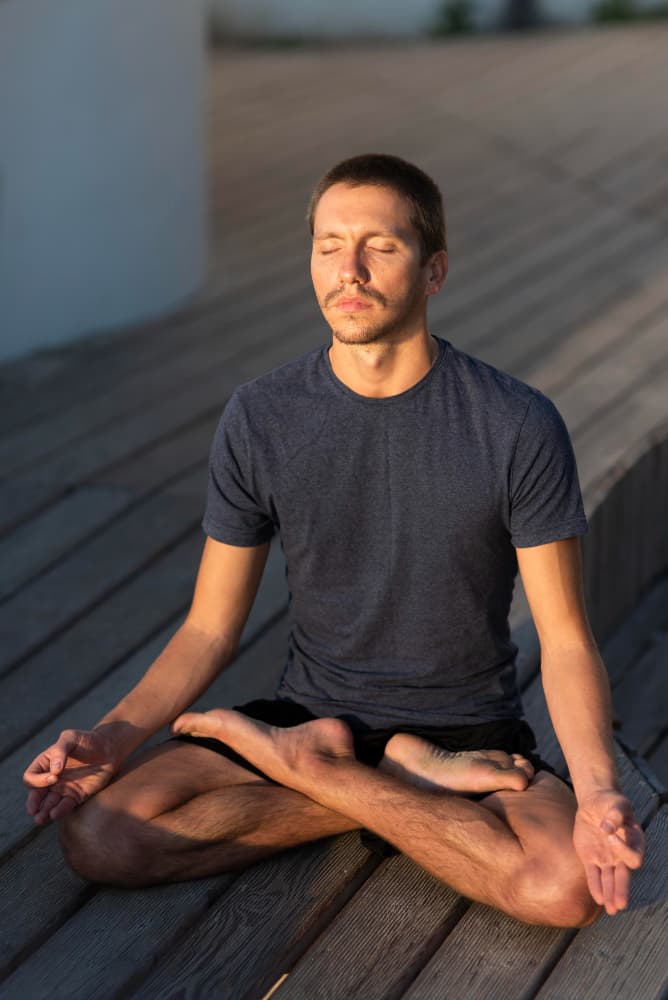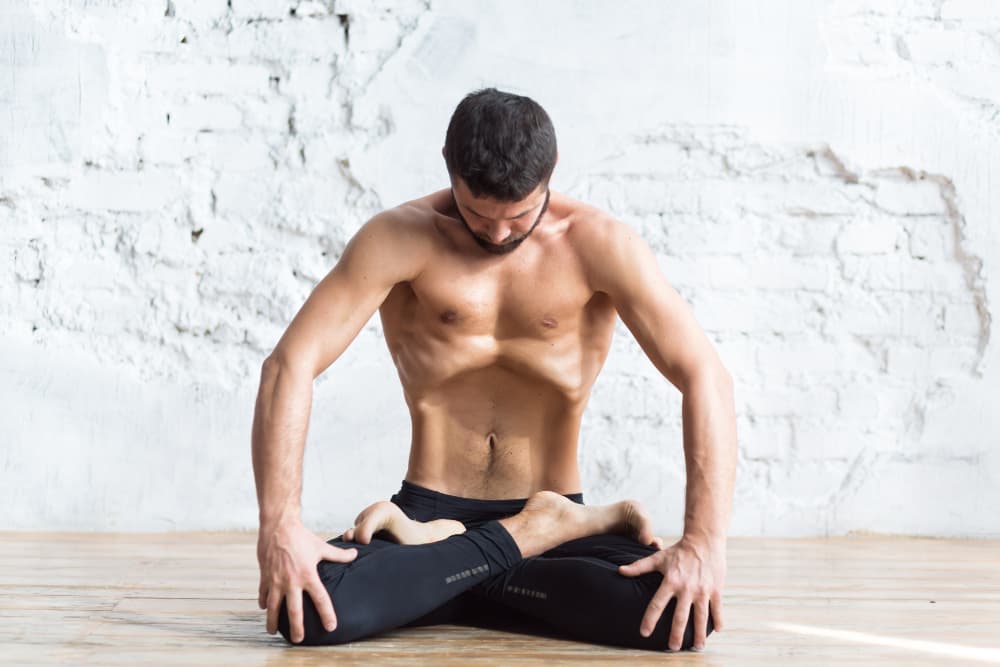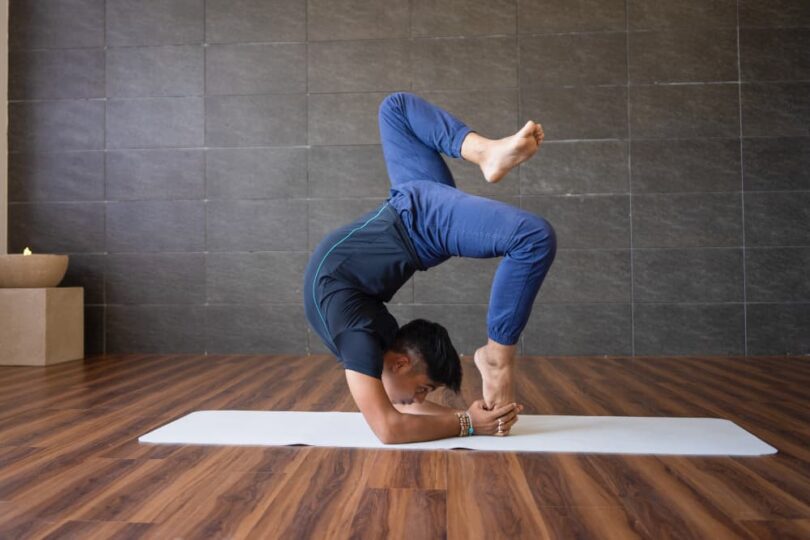Yoga isn’t just for women; it’s a fantastic practice for men, too. It helps build strength, increase flexibility, and reduce stress. If you’re new to yoga, it can seem a bit intimidating. But don’t worry, we’ve got you covered! This guide will walk you through everything you need to know to get started with yoga, specifically tailored for men. From understanding the benefits to learning the essential beginner poses and even crafting a routine, you’ll find it all here. So, let’s get started on your journey to better health and well-being with these beginner yoga poses for men.
Table of Contents
Introduction to Yoga for Men
Benefits of Yoga for Men
Physical Benefits
Yoga offers numerous physical benefits, particularly for men. First and foremost, it improves flexibility. Many men suffer from tight muscles, especially in the hamstrings, shoulders, and lower back. Regular practice of yoga can help stretch and loosen these muscles, enhancing overall flexibility.
Additionally, yoga enhances strength. Unlike traditional weight training, yoga uses body weight for resistance, which can lead to increased muscle tone and endurance. Poses like the plank and warrior series are excellent for building strength in the core, legs, and upper body.
Moreover, practicing yoga can improve posture. In our daily lives, we often find ourselves hunched over desks or slouching on couches. Yoga encourages better alignment and awareness of the body, which can lead to improved posture over time.
Mental and Emotional Benefits
Yoga isn’t just about the physical; it also offers profound mental and emotional benefits. One of the most significant advantages is stress reduction. The combination of deep breathing and mindful movement can help calm the nervous system and reduce stress levels.
Furthermore, yoga improves focus and concentration. Many poses require balance and precise movements, which necessitate mental clarity and presence. This mindfulness practice can carry over into daily life, helping you stay focused and centered.
Lastly, yoga promotes emotional stability. The practice encourages self-awareness and acceptance, which can lead to a more balanced emotional state. It’s a fantastic way to process and release pent-up emotions and stress.
Getting Started with Yoga
Choosing the Right Environment
When starting your yoga journey, it’s crucial to choose the right environment. Find a quiet, comfortable space in your home where you won’t be disturbed. This could be a corner of your living room, bedroom, or even a dedicated yoga room if you have the space.
You’ll also need some basic equipment. A good quality yoga mat is essential for providing support and cushioning. Additionally, consider using props like blocks and straps, which can help you modify poses and ensure proper alignment. For more on recommended equipment, check out this Transform Your Workout: Top 5 Yoga Poses for Men.
Basic Guidelines for Beginners
Before diving into the poses, it’s important to follow some basic guidelines. Start with a warm-up routine to prepare your body for the practice. This could include gentle stretches and movements to get your blood flowing and muscles ready.
Always listen to your body and avoid pushing yourself too hard. Yoga is about finding balance and harmony, not about forcing yourself into uncomfortable positions. Pay attention to any pain or discomfort and modify poses as needed.
It’s also helpful to practice regularly. Consistency is key to reaping the benefits of yoga. Even a short daily practice can make a significant difference over time. And remember, it’s okay to take breaks and rest when needed. Yoga is a personal journey, and it’s essential to move at your own pace.

Essential Beginner Yoga Poses for Men
Standing Poses
Mountain Pose (Tadasana)
Mountain Pose, or Tadasana, is the foundation for all standing poses. It might look simple, but it’s crucial for learning proper alignment. Stand tall with your feet together, pressing firmly into all four corners of your feet. Engage your thighs, lift your kneecaps, and draw your belly in. Keep your shoulders relaxed and arms by your sides, palms facing forward. This pose helps with posture and grounding.
Warrior I (Virabhadrasana I)
Warrior I, or Virabhadrasana I, is excellent for building strength in the legs and core. From Mountain Pose, step your right foot back about four feet, turning your right heel down at a 45-degree angle. Bend your left knee over your left ankle, keeping your hips facing forward. Raise your arms overhead, reaching through your fingertips. This pose enhances balance and stability.
Warrior II (Virabhadrasana II)
Warrior II, or Virabhadrasana II, is another powerful pose for strengthening the lower body. From Warrior I, open your hips and shoulders to the side, extending your arms parallel to the ground. Your front knee should remain bent directly over your ankle. Gaze over your front hand. This pose is great for building endurance and focus.
Seated Poses
Seated Forward Bend (Paschimottanasana)
Seated Forward Bend, or Paschimottanasana, stretches the hamstrings and lower back. Sit with your legs extended in front of you and your feet flexed. Inhale and lengthen your spine, then exhale as you hinge at your hips to reach for your feet. Keep your spine long, avoiding any rounding in your back. This pose helps with flexibility and relaxation.
Easy Pose (Sukhasana)
Easy Pose, or Sukhasana, is a comfortable seated position perfect for meditation. Sit cross-legged with your hands resting on your knees, palms up or down. Sit tall with your spine straight and shoulders relaxed. This pose is calming and helps improve posture and breathing.
Balance Poses
Tree Pose (Vrksasana)
Tree Pose, or Vrksasana, improves balance and concentration. Stand tall, then shift your weight onto your left foot. Place the sole of your right foot against your left inner thigh or calf, avoiding the knee. Bring your hands to your heart or raise them overhead like branches. Focus on a point in front of you to maintain balance. This pose strengthens the legs and core.
Half Moon Pose (Ardha Chandrasana)
Half Moon Pose, or Ardha Chandrasana, challenges balance and coordination. From Warrior II, shift your weight onto your front foot and lift your back leg parallel to the ground. Reach your front hand to the ground or a block, extending your other arm straight up. Keep your gaze forward or up. This pose builds strength and stability.
Backbends
Bridge Pose (Setu Bandhasana)
Bridge Pose, or Setu Bandhasana, opens the chest and strengthens the back. Lie on your back with your knees bent and feet hip-width apart. Press into your feet to lift your hips off the ground, clasping your hands under your back. Keep your chest lifted and shoulders grounded. This pose is great for stretching the chest and spine.
Cobra Pose (Bhujangasana)
Cobra Pose, or Bhujangasana, strengthens the back muscles and opens the chest. Lie face down with your hands under your shoulders. Press into your hands to lift your chest off the ground, keeping your elbows close to your body. Engage your back muscles and avoid overextending your lower back. This pose enhances flexibility and strength in the spine.
Core Poses
Boat Pose (Navasana)
Boat Pose, or Navasana, targets the core muscles. Sit with your knees bent and feet on the ground. Lean back slightly and lift your feet off the ground, balancing on your sit bones. Extend your arms forward, keeping your spine long and chest lifted. This pose builds core strength and balance.
Plank Pose (Phalakasana)
Plank Pose, or Phalakasana, is a fundamental pose for building overall strength. Start on your hands and knees, then step your feet back to form a straight line from head to heels. Keep your core engaged, and avoid letting your hips sag. This pose strengthens the arms, shoulders, and core.
Restorative Poses
Child’s Pose (Balasana)
Child’s Pose, or Balasana, is a restorative pose that promotes relaxation. Kneel on the ground, touching your big toes together and sitting back on your heels. Lower your torso between your thighs and stretch your arms forward or alongside your body. Rest your forehead on the ground. This pose helps release tension and calm the mind.
Corpse Pose (Savasana)
Corpse Pose, or Savasana, is the final relaxation pose. Lie on your back with your legs extended and arms by your sides, palms facing up. Close your eyes and focus on your breath, allowing your body to relax completely. This pose helps integrate the benefits of your practice and promotes deep relaxation.
These beginner yoga poses for men are designed to build strength, improve flexibility, and promote relaxation. By practicing these poses regularly, you’ll experience the many benefits of yoga and develop a strong foundation for your practice.

Creating a Beginner Yoga Routine
Sample Routines
Developing a yoga routine as a beginner is key to sticking with the practice and reaping its benefits. Here are two sample routines to get you started: a 15-minute daily routine and a 30-minute routine for weekends.
15-Minute Daily Routine
This quick routine is perfect for busy days when you still want to fit in some yoga. It focuses on basic poses that stretch and strengthen the body.
- Mountain Pose (Tadasana) – 1 minute
- Stand tall, focus on your breath, and ground yourself.
- Warrior I (Virabhadrasana I) – 2 minutes (1 minute on each side)
- Strengthen your legs and core.
- Warrior II (Virabhadrasana II) – 2 minutes (1 minute on each side)
- Improve your balance and focus.
- Tree Pose (Vrksasana) – 2 minutes (1 minute on each side)
- Enhance your balance and concentration.
- Downward Facing Dog (Adho Mukha Svanasana) – 2 minutes
- Stretch your back, hamstrings, and shoulders.
- Plank Pose (Phalakasana) – 1 minute
- Build core strength.
- Child’s Pose (Balasana) – 2 minutes
- Relax and stretch your back.
- Seated Forward Bend (Paschimottanasana) – 3 minutes
- Stretch your hamstrings and lower back.
This routine helps maintain flexibility, strength, and calmness throughout the day.
30-Minute Routine for Weekends
On weekends, you can dedicate a bit more time to your yoga practice. This routine combines standing, seated, and restorative poses for a balanced session.
- Mountain Pose (Tadasana) – 2 minutes
- Begin by grounding and focusing on your breathing.
- Warrior I (Virabhadrasana I) – 4 minutes (2 minutes on each side)
- Strengthen and stretch your body.
- Warrior II (Virabhadrasana II) – 4 minutes (2 minutes on each side)
- Work on balance and endurance.
- Tree Pose (Vrksasana) – 4 minutes (2 minutes on each side)
- Improve balance and focus.
- Downward Facing Dog (Adho Mukha Svanasana) – 3 minutes
- Stretch and invigorate your whole body.
- Plank Pose (Phalakasana) – 2 minutes
- Strengthen your core and arms.
- Seated Forward Bend (Paschimottanasana) – 4 minutes
- Stretch your hamstrings and lower back.
- Bridge Pose (Setu Bandhasana) – 3 minutes
- Open your chest and strengthen your back.
- Boat Pose (Navasana) – 2 minutes
- Engage your core and improve stability.
- Child’s Pose (Balasana) – 3 minutes
- Relax and stretch your back.
- Corpse Pose (Savasana) – 3 minutes
- End with deep relaxation.
This routine provides a more thorough practice, helping you build strength, flexibility, and mindfulness.
Tips for Consistency
Sticking to a yoga routine can be challenging, but these tips can help you stay consistent:
- Set Realistic Goals
- Start with short, manageable sessions and gradually increase the duration as you become more comfortable.
- Track Your Progress
- Keep a yoga journal to note down your practice days, how you feel, and any improvements you notice. This can be motivating and help you see your progress over time.
- Create a Dedicated Space
- Having a specific spot in your home for yoga can make it easier to practice regularly. Make it inviting with a good mat, maybe some candles or soft lighting.
- Practice at the Same Time Each Day
- Whether it’s first thing in the morning or right before bed, find a time that works for you and stick to it. Consistency is key.
- Listen to Your Body
- Yoga is about finding balance, not pushing yourself too hard. Pay attention to how you feel and modify poses as needed.
By following these tips and incorporating the sample routines into your schedule, you’ll be well on your way to making yoga a regular part of your life. This will help you build a solid foundation and enjoy the numerous benefits of yoga practice.
FAQs
Can yoga help with muscle building?
Yes, yoga can help with muscle building. While traditional weight lifting focuses on isolated muscle groups, yoga engages multiple muscles simultaneously through various poses and movements. Poses like the Plank and Warrior series are particularly effective in building strength in the core, arms, and legs. Over time, consistent practice can lead to increased muscle tone and strength.
How often should beginners practice yoga?
Beginners should aim to practice yoga at least 2-3 times a week to start experiencing its benefits. As you become more comfortable with the poses and routines, you can gradually increase the frequency. Even short, daily sessions can be very beneficial and help establish a regular practice.
What should I wear for yoga sessions?
For yoga sessions, wear comfortable, breathable clothing that allows for a full range of motion. Athletic wear like shorts, leggings, and fitted T-shirts are ideal. Avoid clothing that is too loose or restrictive, as it can interfere with your movements. Additionally, practicing barefoot is recommended to maintain stability and balance.
Is yoga enough for a complete workout?
Yoga can be a part of a complete workout regimen, especially if it includes strength-building poses and flows that increase your heart rate. However, for those looking to achieve specific fitness goals like cardio fitness or significant muscle gain, it’s beneficial to combine yoga with other forms of exercise such as running, cycling, or weight lifting.
How do I avoid injuries while practicing yoga?
To avoid injuries while practicing yoga, always listen to your body and respect its limits. Start with beginner-friendly poses and gradually progress to more advanced ones as your flexibility and strength improve. Using props like blocks and straps can help you achieve proper alignment and reduce the risk of strain. It’s also important to warm up before your practice and cool down afterward. If possible, take classes with a certified instructor who can provide guidance and corrections.
Conclusion
Embarking on a yoga journey can be incredibly rewarding for men. Yoga offers a unique blend of physical, mental, and emotional benefits that are hard to find in other forms of exercise. From improving flexibility and strength to reducing stress and enhancing focus, the advantages of incorporating yoga into your routine are substantial.
Starting with beginner yoga poses for men can set a solid foundation. Remember to practice regularly, listen to your body, and gradually increase the complexity of your poses as you become more comfortable. The routines provided can help you get started and stay consistent, whether you have just a few minutes each day or can dedicate more time on the weekends.
Yoga is more than just a workout; it’s a path to better health and well-being. By committing to a regular practice, you’ll not only improve your physical fitness but also find greater peace and balance in your daily life. So, unroll your mat, take a deep breath, and enjoy the journey ahead. Namaste!







